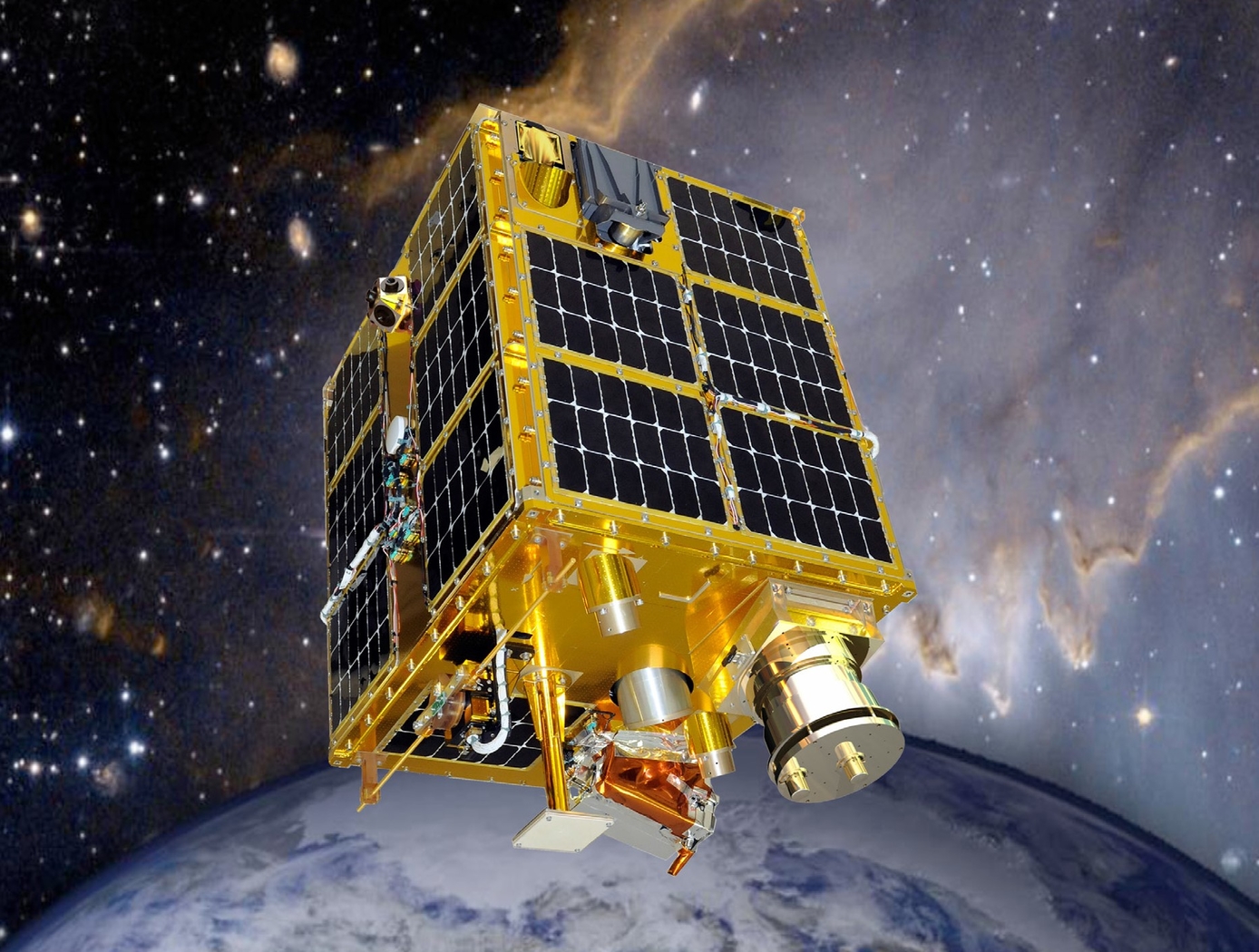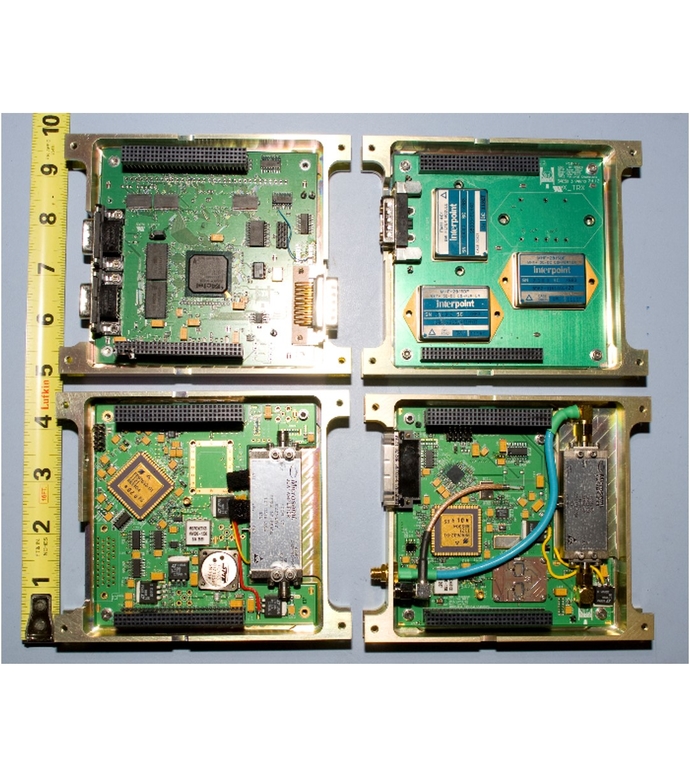High-Speed, Low-Cost Telemetry Access from Space
communications
High-Speed, Low-Cost Telemetry Access from Space (MFS-TOPS-62)
Programmable, lightweight, and adaptable software-defined radio
Overview
Researchers at NASA's Marshall Space Flight Center have developed software-defined radio (SDR) telemetry transceiver technology to collect and transmit data to and from small satellites and microsatellites. The SDR concept uses a minimal number of traditional analog radio frequency components to convert RF signals to a digital format. Digital signal processing replaces bulky radio frequency components and enables reduced cost as well as size, weight, and power requirements (SWaP). The NASA technology enables software and firmware updates that increase lifespan and efficacy of satellites, supporting a wide variety of changing radio protocols as they are developed. A modular design enables inclusion of multiple band frequency transmitters and receivers (S band, X band, Ka band, etc.). The NASA SDR can find use in satellite applications in which cost savings, upgradability, and reliability are essential. A first-generation SDR has been flight tested on NASA's FASTSAT mission.
The Technology
NASA's SDR uses Field-Programmable Gate Array (FPGA) technology to enable flexible performance on orbit. A first-generation FM-modulated transceiver is capable of operating at up to 1 Mbps downlink and 50 kbps uplink, full duplex. An FPGA performs Reed-Solomon (255,223) encoding, decoding, and bit synchronization, providing Consultative Committee for Space Data Systems (CCSDS) and Near Earth Network (NEN) telemetry protocol compatibility. The transceiver accepts data from the onboard flight computer via a source synchronous RS422 interface.
NASA's second-generation full duplex SDR, known as PULSAR (programmable ultra-lightweight system-adaptable radio, Figures 1 and 2 below) incorporates command receiver and telemetry transmitters, as well as updated processing and power capabilities. An S-band command receiver offers a max uplink data rate of 300 Kbps and built-in QPSK demodulation. X- and S-Band telemetry transmitters offer a max downlink data rate of 150 Mbps and flexible forward-error correction (FEC) using Reed-Solomon encoding (LDPC rate 7/8 and 1/2 convolution in development), and it uses QPSK modulation. The use of FEC adds an order of magnitude increase in telemetry throughput due to an improved coding gain. An onboard FPGA uses high-speed logic for uplink/downlink and encoding/decoding processes. Balloon flight testing has been conducted and is ongoing for PULSAR.


Benefits
- Adaptability: SDR enables support for changing radio protocols, implementation of new transponder types, and bug fixes while in service.
- Low cost: SDR enables production costs from $10,000-100,000s by leveraging high-quality componentry without the expense of qualification testing.
- High-speed data transmission: PULSAR's FEC coding enables 300kbps uplink and 150Mbps downlink rates.
- Reduced SWaP: Fewer required components by FPGA results in reduced payload weight and power consumption.
- Modular design: Hardware design enables flexible inclusion of different combinations of band frequency transmitters and receivers.
Applications
- Atmospheric studies: climate and terrestrial weather monitoring and forecasting
- Earth observation: transmission of imagery for urban planning, disaster monitoring, agriculture, etc.
- Ionospheric studies: observation of space weather phenomena
Technology Details
Sims, et al. Programmable Ultra-Lightweight System Adaptable Radio (PULSAR) Low-Cost Telemetry Access from Space. 27th Annual AIAA/USU Conference on Small Satellites.
Varnavas, et al.The Use of Field-Programmable Gate Arrays (FPGA) in Small Satellite Communication Systems. International Conference on Advances in Satellite and Space Communications (SPACOMM) 2015.
Varnavas, et al.The Use of Field-Programmable Gate Arrays (FPGA) in Small Satellite Communication Systems. International Conference on Advances in Satellite and Space Communications (SPACOMM) 2015.


